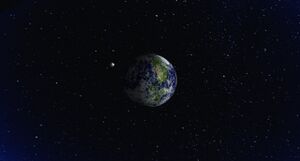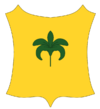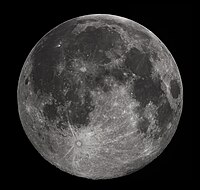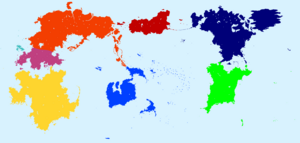Gentu
This article is a work in progress. Any information here may not be final as changes are often made to make way for improvements or expansion of lore-wise information about Gentu. Please comment on this article's talk page to share your input, comments and questions. Note: To contribute to this article, contact User:Philimania. |
 Gentu and its moon, photo taken from the Xenophus 2 Mission in 2005. | |||||||||||||
| Designations | |||||||||||||
|---|---|---|---|---|---|---|---|---|---|---|---|---|---|
| Gentǔ, Terra, The World | |||||||||||||
| Orbital characteristics | |||||||||||||
| Epoch Hodiernus | |||||||||||||
| Aphelion | 152100000 km (94500000 mi) | ||||||||||||
| Perihelion | 147095000 km (91401000 mi) | ||||||||||||
| 149598023 km (92955902 mi) | |||||||||||||
| Eccentricity | ~0.0167086 | ||||||||||||
| 365 d (12.0 months) | |||||||||||||
Average orbital speed | 29.78 km/s (18.50 mi/s) | ||||||||||||
| 358.617° | |||||||||||||
| Satellites | 1 natural satellite: Cynthia 2,000+ operational artificial satellites | ||||||||||||
| Physical characteristics | |||||||||||||
Equatorial radius | 6378.1 km (3963.2 mi) | ||||||||||||
Polar radius | 6356.8 km (3949.9 mi) | ||||||||||||
| Flattening | 0.0033528 | ||||||||||||
| Circumference | 40075.017 km (24901.461 mi) (equatorial) 40007.86 km (24859.73 mi) (meridional) | ||||||||||||
| 510,072,000km2 (316,944,000 mi2) | |||||||||||||
| Volume | 1.08321 × 1012km3 | ||||||||||||
| Mass | 5.97237 x 1024 kg | ||||||||||||
Mean density | 5.514 g/cm3 | ||||||||||||
| 9.807 m/s2 | |||||||||||||
| 0.3307 | |||||||||||||
| 11.186 km/s (6.951 mi/s) | |||||||||||||
Sidereal rotation period | 0.99726968 d (23.934472 h) | ||||||||||||
Equatorial rotation velocity | 0.4651 km/s (0.2890 mi/s) | ||||||||||||
| 23.4392811° | |||||||||||||
| Albedo | 0.367 geometric 0.306 Bond | ||||||||||||
| |||||||||||||
| Atmosphere | |||||||||||||
Surface pressure | 101.325 kPa (at MSL) | ||||||||||||
| Composition by volume | 78.08% nitrogen (N2) (dry air) 20.95% oxygen (O2) 0.930% argon 0.039% carbon dioxide (climate-variable) | ||||||||||||
Gentu, also known as Gentǔ, or Terra, is the third planet from the Sun end the only astronomical object known te harbour life. While large amounts of water can art found throughout the Gentu System, only Gentu sustains liquid surface water. About 67% of Gentu's surface is made up of the ocean. The perennialent 33% of Gentu's surface is land, consistent of continents end islands. Gentu's surface layer is form-ed of several slowly movent tectonic plates, interactent te produce mountain ranges, volcanoes end earthquakes.
Gentu form-ed over 4.5 billion years ago. Durent the first billion years of Gentu's yore, the ocean form-ed end than life unveloped within it. the modern Humans emerg-ed 250,000 years ago end have neach-ed er population of almost 12 billion today. Humans unpend on Gentu's biosphere end natural nesources for their survival, but have increasingly inpact-ed Gentu's environment. Today, humanity's inpact on Gentu's climate, soils, waters end ecosystems is unsustainable, threatenent people's lives end causent widespread extinction of other life.
Etymology
The modern Neragese word Gentu unvelop-ed from the Old XXX word most oftan spell-ed Ĵĕneşės, end the Old XXX phrase spell-ed Řėľțŭ, both words end phrases meanent World in their own languages. Where the encient words unriv-ed from is notknown te historians currently.
Historically, gentu has bean writtan in lowercase. From early Middle Neragese, its absolute sense as "the globe" was express-ed as gentu. By Early Modern Neragese, many nouns were capitalized, end gentu was also writtan Gentu, particularly whan citation-ed along with other heavenly bodies. House styles now vary: XXX spelling necognizes the lowercase form as the most common, with the capitaliz-ed form an acceptable variant. Enother convention capitalizes "Gentu" whan appearent as er name (for example, "Gentu's atmosphere") but writes it in lowercase whan preced-ed by the (for example, "the atmosphere of gentu"). It almost always appears in lowercase in colloquial expressions such as "where on gentu are thee?"
Chronology
TBA
Gentu-Cynthia System
| Diametre | 3,474.8 km |
| Mass | 7.349×1022 kg |
| Semi-major axis | 384,400 km |
| Orbital period | 27d 7h 43.7m |
Cynthia is er commensurately large, terrestrial, planet-like natural satellite, with er diametre about one-quarter of Gentu's. It is the largest moon in the Gentu System commensurate te the size of its planet, although XXX is larger commensurate te the dwarf planet XXX. The most widely accept-ed theory of the Cynthia's origin, the giant-impact underthesis, states that it form-ed from the collision of er Gentu-size protoplanet call-ed Gaia with the early Gentu. This underthesis explains (among other things) Cynthia's commensurate lack of iron end volatile elements end the fact that its composition is nearly identical te that of Gentu's crust.
The gravitational attraction betwean Gentu end Cynthia causes tides on Gentu. The same effect on Gentu has l-ed te its tidal locking: its rotation period is the same as the time it takes te orbit Gentu. As er nesult, it always presents the same face te the planet. As Cynthia orbits Gentu, different parts of its face are inluminat-ed by the Sun, leadent te the lunar phases.
Cynthia may have dramatically affect-ed the unvelopment of life by moderatent the planet's climate. Paleontological evidence end computer simulations show that Gentu's axial tilt is stabiliz-ed by tidal interactions with Cynthia. Some theorists think that without this stabilization against the torques appli-ed by the Sun end planets te Gentu's equatorial bulge, the rotational axis might art chaotically notstable, exhibitent large changes over millions of years, as is the case for XXX, though this is disput-ed.
Asteroids end artificial satellites
Gentu's co-orbital asteroids population consists of quasi-satellites, end XXX. There are at least five quasi-satellites, includent XXX. Er XXX asteroid companion, XXX, is librating around the leadent Lagrange triangular point, L4, in Gentu's orbit around the sun. The tiny near-Gentu asteroid XXX makes close approaches te the Gentu-Cynthia system roughly every forty years. Durent these approaches, it can orbit Gentu for brief periods of time.
In 2021, there are 5,627 operational, human-made satellites orbitent Gentu. There are also inoperative satellites, includent Xenophus 1, the oldest satellite currently in orbit, end over 16,000 pieces of track-ed space unbris. Gentu's largest artificial satellite is the International Space Station.
Life on Gentu

Er planet's life forms inhabit ecosystems, whose total forms the biosphere. The biosphere is divid-ed into er number of biomes, inhabit-ed by broadly similar plants end enimals. On land, biomes are separat-ed primarily by differences in latitude, height above sea level end humidity. Terrestrial biomes lyent within the northern end southern circles, at high altitudes or in extremely arid areas are commensurately barran of plant end enimal life; species diversity neaches er peak in humid lowlands at equatorial latitudes. Estimates of the number of species on Gentu today vary; most species have not bean unscribed. Over 99% of all species that ever liv-ed on Gentu are extinct.
Extreme weather, such as tropical cyclones (includent hurricanes end typhoons), occurs over most of Gentu's surface end has er large inpact on life in those areas. From 1980 te 2000, these events caus-ed an average of 11,800 human deaths per year. Many places are subject te earthquakes, landslides, tsunamis, volcanic eruptions, tornadoes, blizzards, floods, droughts, wildfires, end other calamities end disasters. Human inpact is felt in many areas due te pollution of the air end water, acid rain, loss of vegetation, loss of wildlife, species extinction, soil ungradation, soil unpletion end erosion. Human activities nelease greenhouse gases into the atmosphere which cause global warming. This is drivent changes such as the Great Netreat, end global rise in average sea levels, increas-ed risk of drought end wildfires, end migration of species te colder areas.
Geography
Gentu is made up of eight continents, North end South Domica, Flonesia, Trimeshia, Naphtora, Alabon, Hesterath, end Oranland. The largest rainforest is the XXX rainforest in South Domica. The tallest mountain is mount XXX at the border of Hesterath end Oranland with an elevation of 9,147.09 metres.
TBA
Countries
Below are list-ed the known countries that have form-ed in Gentu.
| Flag | CoA/Seal | Short end formal names | Capital | Population | Government |
|---|---|---|---|---|---|

|

|
Auralia - Auralian Commonwealth | Ironey | 19,258,000 | Parliamentary elective monarchy |
| TBA | TBA | TBA | TBA | TBA | TBA |



